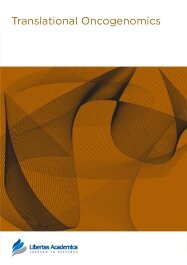

Publication Date: 10 Feb 2008
Journal: Translational Oncogenomics
Citation: Translational Oncogenomics 2008:3 1-13

1Institut für Umweltmedizinische Forschung at the Heinrich-Heine-University gGmbH, Auf´m Hennekamp 50, D-40225 Düsseldorf, Germany.2 Molecular Oncology and Aging, Department of Dermatology, Eberhard-Karls-University, Tübingen, Germany.3 Department of Dermatology, Heinrich-Heine-University, Moorenstr. 5, D-40225 Düsseldorf, Germany.4 Department of Medical Biometry, Eberhard-Karls-University, Tübingen, Germany.
Abstract
Xeroderma pigmentosum (XP) is a genetic disorder characterised by hypo-/hyperpigmentation, increased sensitivity to ultraviolet (UV)-radiation and an up to 2000-fold increased skin cancer risk. Cells from XP-patients are defective in nucleotide excision repair (NER) responsible for repair of UV-induced DNA damage. This defect accounts for their mutator phenotype but does not predict their increased skin cancer risk. Therefore, we carried out array analysis to measure the expression of more than 1000 genes after UVB-irradiation in XP cells from three complementation groups with different clinical severity (XP-A, XP-D, XP-F) as well as from patients with normal DNA repair but increased skin cancer risk (≥2 basal or squamous cell carcinoma at age <40yrs). Of 144 genes investigated, 20 showed differential expression with p < 0.05 after irradiation of cells with 100 mJ/cm2 of UVB. A subset of six genes showed a direct association of expression levels with clinical severity of XP in genes affecting carcinogenesis relevant pathways. Genes identified in XP cells could be confirmed in cells from patients with no known DNA repair defects but increased skin cancer risk. Thus, it is possible to identify a small gene subset associated with clinical severity of XP patients also applicable to individuals with no known DNA repair defects.
PDF (1.08 MB PDF FORMAT)
RIS citation (ENDNOTE, REFERENCE MANAGER, PROCITE, REFWORKS)
BibTex citation (BIBDESK, LATEX)
XML
PMC HTML

As an author of a review published in Translational Oncogenomics, I was impressed by the prompt processing and speed of publication. The entire submission, review and publication process was easy, quick and pleasant. The comments from reviewers and associate editor were high quality, scientifically deep and objective. It was a great pleasure to cooperate with such qualified and friendly team. I highly recommend publication in Libertas Academica journals.
Facebook Google+ Twitter
Pinterest Tumblr YouTube